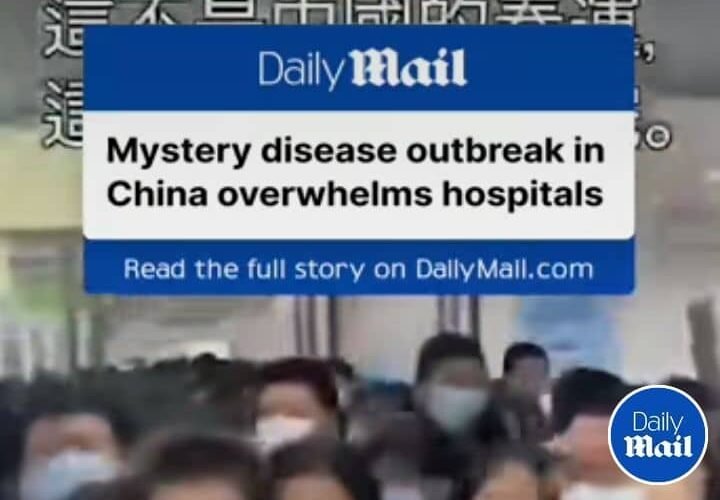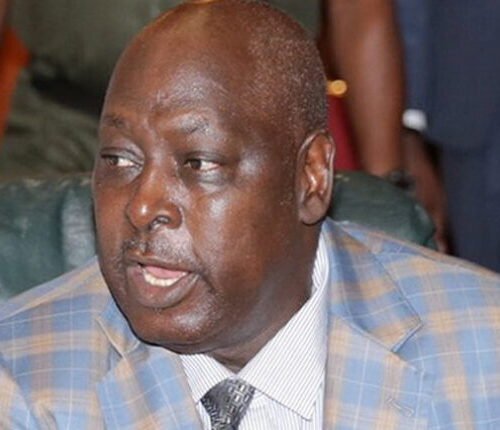The Truth About China’s Mysterious Disease: Are We Being Told the Whole Story?
The COVID-19 pandemic had sparked intense debate and speculation about its origins. While the dominant narrative posits that the virus emerged naturally from an animal source, several theories suggest that its appearance may not be entirely coincidental. One such theory proposes that COVID-19 could be a laboratory-created virus, engineered through gain-of-function research or other means.
The lab-leak hypothesis gained significant traction in 2020, with some scientists and experts suggesting that the virus may have escaped from the Wuhan Institute of Virology in China. This theory is fueled by concerns about the institute’s handling of coronaviruses and the proximity of the lab to the Huanan Seafood Market, where the first cases were reported.
Another theory casting doubt on the natural origin of COVID-19 involves the concept of “biowarfare.” This idea posits that the virus could have been deliberately created and released as a form of biological warfare. While this theory is highly speculative and lacks concrete evidence, it has been perpetuated by various online sources and some conspiracy theorists.
The “conspiracy of silence” theory suggests that governments, health organizations, and other powerful entities may be withholding information about the true origins of COVID-19. Proponents of this theory argue that the lack of transparency and the rapid suppression of dissenting voices indicate a larger cover-up.
Some researchers have also pointed to the unusual characteristics of COVID-19, such as its high transmissibility and unique genetic features, as evidence that it may not be a naturally occurring virus. These claims are often based on comparisons with other coronaviruses and the observed behavior of COVID-19 in different environments.
The “Event 201” theory involves a simulation exercise conducted in October 2019, which modeled a fictional coronavirus pandemic. Some conspiracy theorists believe that this event was more than just a coincidence, suggesting that it may have been a “dry run” or a precursor to the actual pandemic.
Other theories propose that COVID-19 could be linked to 5G technology, vaccines, or other environmental factors. While these ideas have been largely discredited by scientific evidence, they continue to circulate online and contribute to the ongoing debate about the origins of the pandemic.
The various theories casting doubt on the natural origin of COVID-19 reflect a deeper desire for truth and transparency. While many of these theories are speculative or lack concrete evidence, they underscore the need for continued investigation and open discussion about the pandemic’s origins.
In spite of all the plausible theories that reveal the truths, here are some potential reasons why COVID-19 variants and outbreaks often seem to emerge or intensify at the beginning of the year:
- Post-holiday season surge: The winter holiday season (December to January) is often marked by increased travel, social gatherings, and indoor events, creating opportunities for the virus to spread.
- Low humidity and cold temperatures: The dry, cold air of winter can make people more susceptible to respiratory infections like COVID-19.
- Increased testing and reporting: As people return to work and school after the holidays, there may be an increase in testing and reporting of COVID-19 cases, making it seem like outbreaks are more frequent.
- Mutations and evolution: COVID-19 is an RNA virus, which means it can mutate rapidly. The beginning of the year might coincide with the emergence of new variants that are more transmissible or virulent.
- Global connectivity and travel: The start of the year often sees increased international travel, business, and tourism, potentially facilitating the spread of COVID-19 variants across borders.
- Public health surveillance and awareness: Public health authorities may be more vigilant and proactive in monitoring and reporting COVID-19 cases at the beginning of the year, following the holiday season.
- Seasonal factors and behavioral changes: People’s behavior and habits change during the winter months (e.g., spending more time indoors, having poorer air quality), which can contribute to increased transmission.
- Vaccine-induced immunity waning: If vaccine-induced immunity wanes over time, the beginning of the year might see increased cases as people’s immunity levels decrease.
Keep in mind that these factors can interact with each other in complex ways, making it challenging to pinpoint a single reason for the apparent surge in COVID-19 cases at the beginning of the year.
Now, this is early days in the glorious year 2025, what are we hearing from China?
Reports of a new mysterious disease in China have sparked concerns globally. The situation is still unfolding, and details are emerging. It’s essential to approach this situation with caution and rely on credible sources for information.
The origins of COVID-19 are still being investigated, and it’s crucial to await the outcome of these investigations before drawing conclusions. The World Health Organization (WHO) and other global health authorities are working to understand the situation and provide guidance.
Regarding the involvement of governments and other entities, it’s important to emphasize the need for transparency, cooperation, and evidence-based decision-making. Diplomatic efforts and international collaboration are crucial in addressing global health challenges.
China is currently grappling with a mysterious surge in respiratory illnesses, particularly pneumonia, among children. While the World Health Organization (WHO) attributes the spike to common winter infections like adenoviruses, influenza virus, and respiratory syncytial virus (RSV), the high prevalence of pneumonia is unusual.
Epidemiologists expected a surge in respiratory diseases after China eased its COVID-19 restrictions, but the scale of pneumonia cases is unexpected. Unlike other countries that saw spikes in influenza and RSV after lifting restrictions, China’s experience is distinct.
Key factors contributing to the mysterious pneumonia surge:
- Mycoplasma pneumoniae: A bacterium that infects the lungs, causing “walking pneumonia,” is mainly responsible for the increase in children’s hospital admissions since May, particularly in northern cities like Beijing.
- Seasonal factors: The surge is happening during the winter season, which is typical for respiratory illnesses.
- Post-pandemic impact: The easing of COVID-19 restrictions may have contributed to the spread of respiratory diseases.
The WHO has requested more information from China’s health authorities to better understand the situation. While the exact cause of the mysterious pneumonia surge is still unclear, it’s evident that China is facing an unusual and concerning public health challenge.
The mysterious pneumonia outbreak in China has raised more questions than answers. As the situation continues to unfold, it’s becoming increasingly clear that there may be more to the story than what’s being officially reported. The sudden surge in pneumonia cases, particularly among children, has sparked concerns about the potential for a larger public health crisis. With many unanswered questions still lingering, it’s essential to critically examine the official narrative and consider alternative explanations.

As we seek to uncover the truth behind China’s mysterious disease, it’s crucial to remain vigilant and skeptical. The lack of transparency and potential cover-ups only fuel speculation and mistrust. By pushing for greater accountability and disclosure, we can work towards a more accurate understanding of the situation. Ultimately, it’s only by looking beyond the official story that we can hope to uncover the real reasons behind China’s mysterious pneumonia outbreak and ensure the public’s safety and well-being.
Dr Chukwuemeka Ifegwu Eke writes from the University of Abuja Nigeria.







